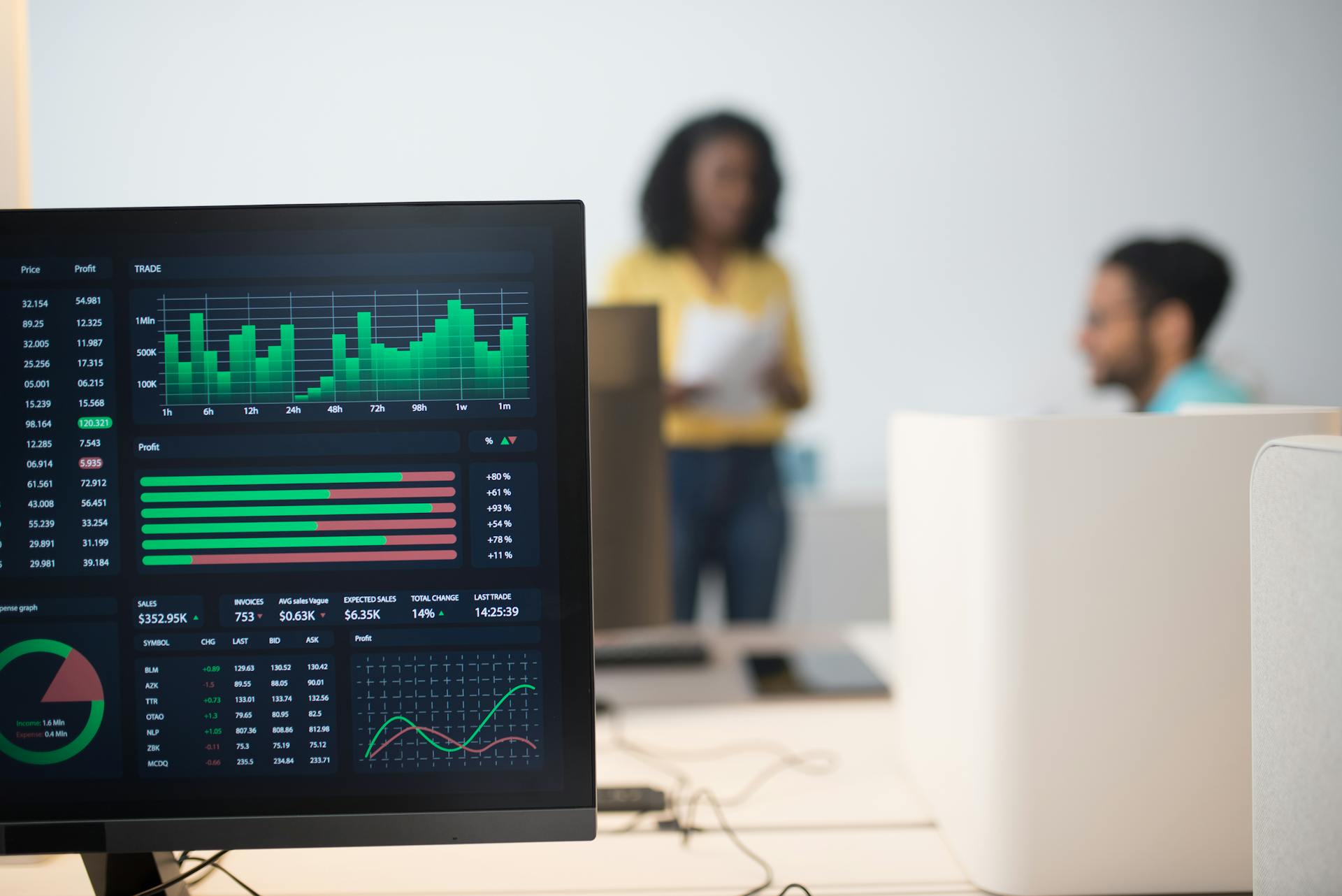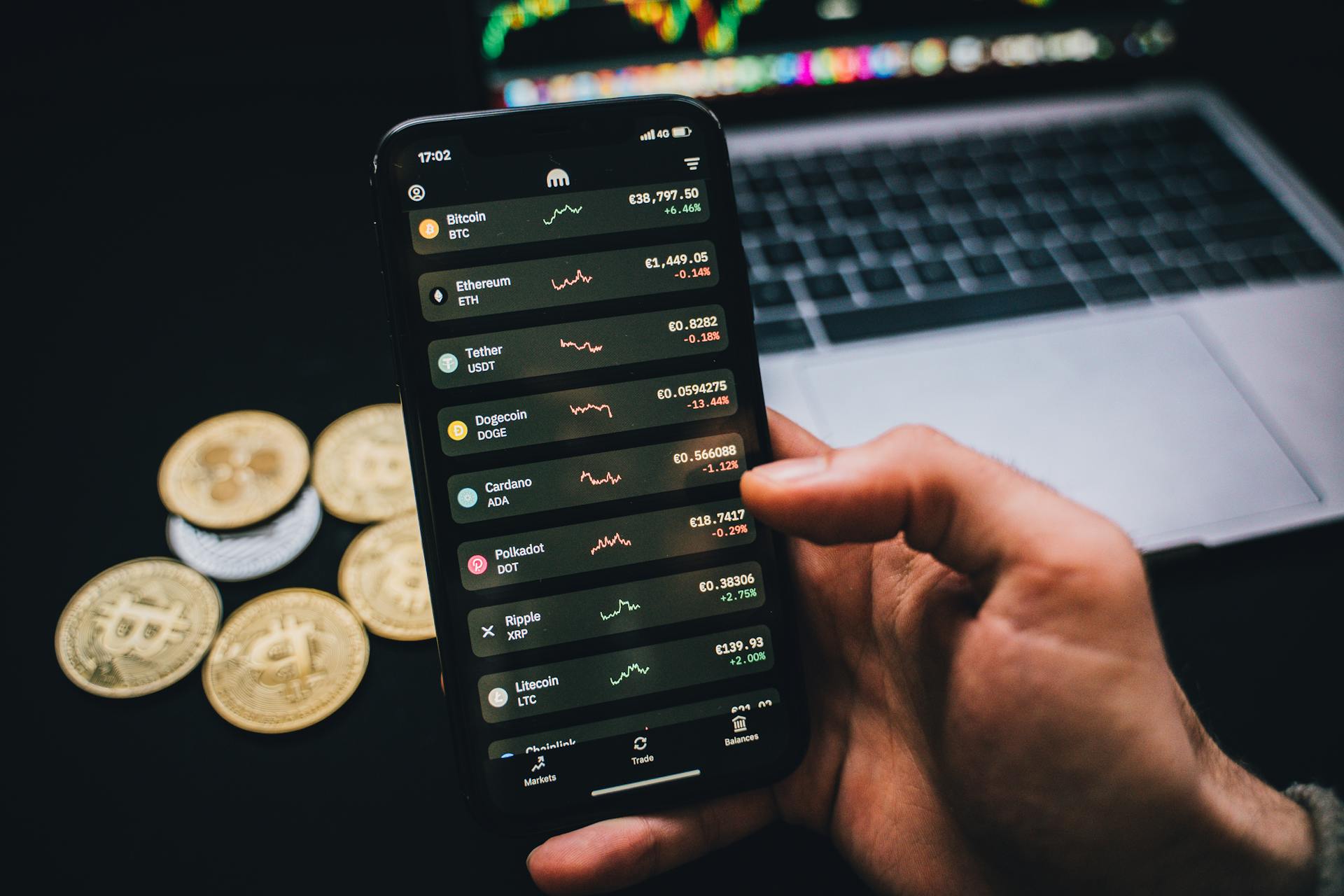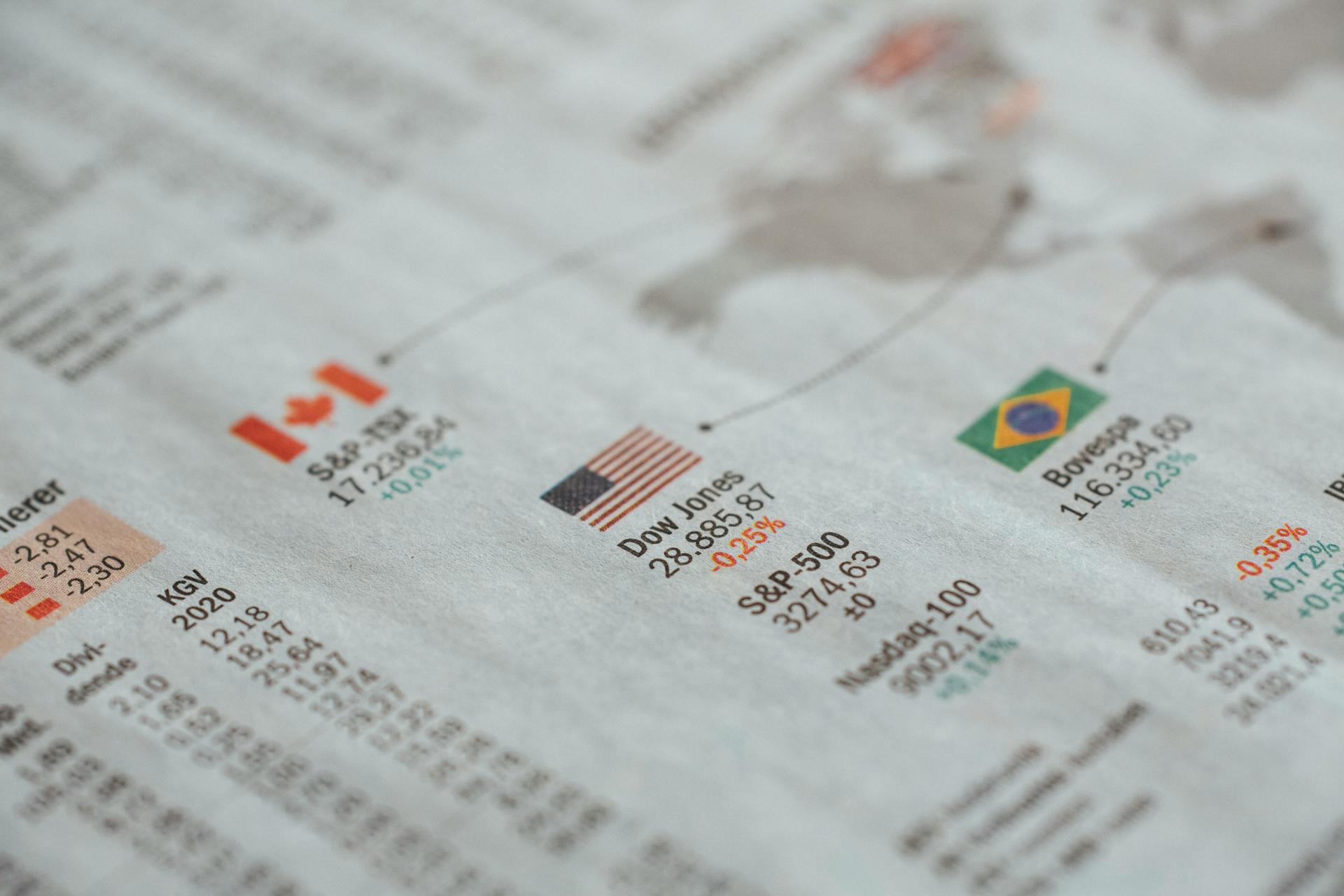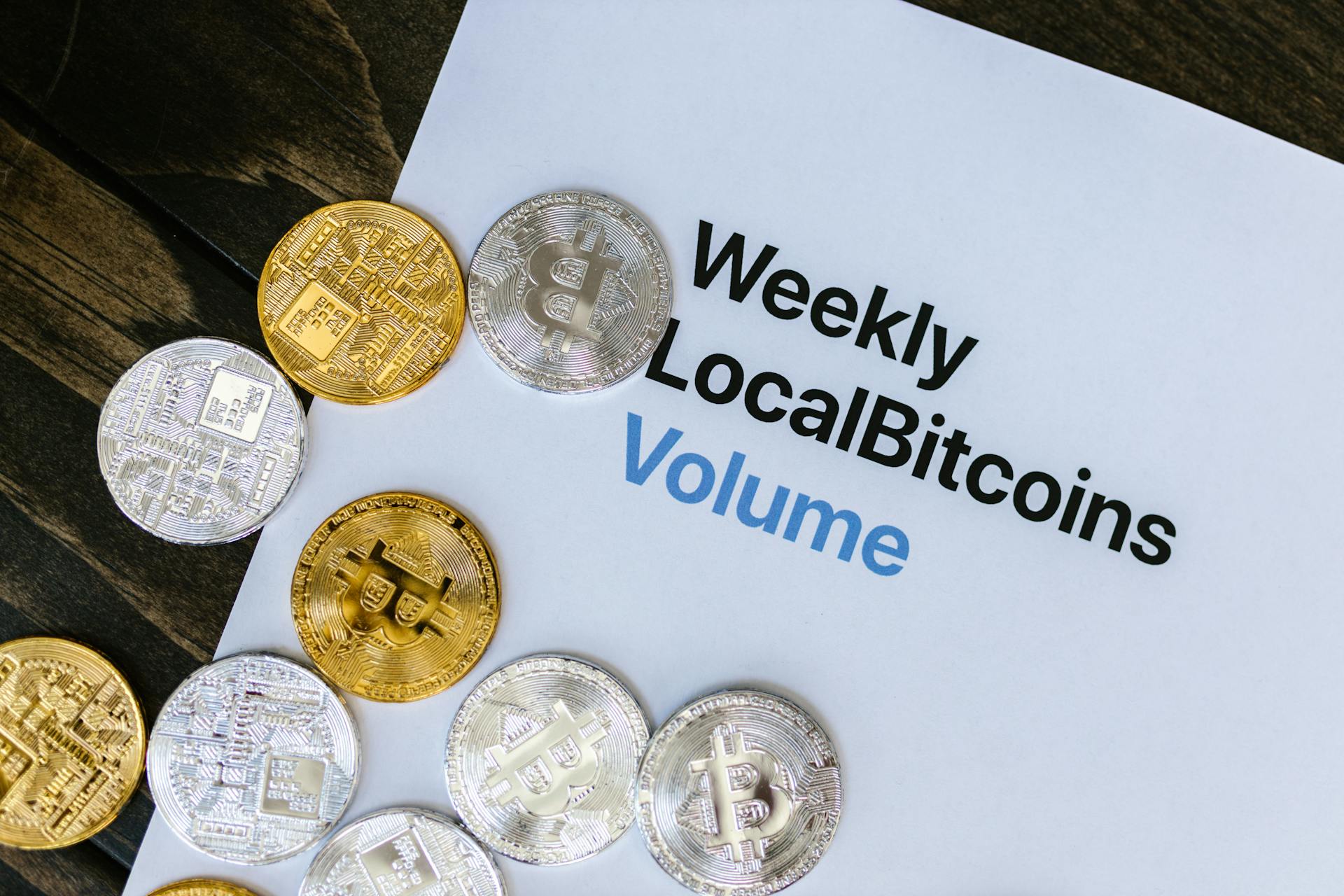
ETFs can trade after hours, but it's not a straightforward process. Some ETFs, like those listed on the NYSE Arca, can trade on the after-hours market, while others may not.
Trading after hours can be a bit riskier, as it's often less liquid than regular trading hours. This means that even small price movements can have a bigger impact.
The after-hours market typically runs from 4:00 PM to 8:00 PM ET, but it's not a guarantee that your ETF will trade during this time. Some ETFs may only trade during specific after-hours sessions, while others may not trade at all.
Keep in mind that after-hours trading can be more volatile than regular trading hours, so it's essential to be cautious and do your research before making any trades.
What Is After Hours Trading?
After-hours trading is a specific trading window that enables investors to buy and sell stocks for four additional hours, from 4 p.m. to 8 p.m. Eastern time.
During this time, trading is carried out through Electronic Communications Networks (ECNs), which enable investors to buy and sell stocks without the standard daytime market participants.
Brokers, dealers, and market makers are not on the floor of the stock exchange during after-hours trading, but transactions are still executed through the ECN.
Sell transactions wait for buyers and buy transactions wait for sellers, and when transactions match up, those orders are executed through the ECN.
How It Works
After-hours trading for ETFs works similarly to regular trading hours, but with some key differences. Electronic communication networks (ECNs) match buy and sell orders, and investors have access to various order types, including market, limit, and stop-loss orders.
Order matching is done electronically, and orders are sent to ECNs or other platforms for execution. The best price at which a trade is executed is used, which could differ from the one used during regular trading hours.
Expand your knowledge: Difference between Buy Stop and Buy Limit Order
Here's a breakdown of order behavior during extended or overnight hours:
Keep in mind that ETFs may not be tradable during extended hours, and orders placed during this time will be queued for the next regular market trading session.
What Is Trading?
Trading is simply buying and selling stocks or other securities. It's a way for investors to participate in the market and potentially earn returns on their investments.
Trading can take place during normal trading hours or after hours, with typical after-hours trading hours in the U.S. being between 4 p.m. and 8 p.m. Eastern Time.
Investors can place orders for after-hours execution, allowing them to react to company earnings releases and other news that takes place before or after normal trading hours.
Prices can swing wildly on an earnings release or news that a CEO is stepping down, making it essential to place an order for after-hours trading if you want to buy or sell as soon as possible based on the news.
For more insights, see: U.s. Investors Are Increasingly Planning to Invest in Crypto Etfs
How It Works

After-hours trading works through electronic communication networks (ECNs) that match buy and sell orders. This process is relatively the same as trading during normal hours, with investors logging into their brokerage account and placing orders for the stocks they want to buy.
Order matching is done electronically by ECNs, which means that orders are matched and executed quickly and efficiently. This is done through a variety of order types, including market, limit, and stop-loss orders.
To be executed, orders are sent to ECNs or other platforms, where they are matched with other orders and executed at the best price available. This price could differ from the one used during regular trading hours.
Prices are determined by the interactions of buyers and sellers during after-hours trading, which is facilitated by liquidity providers such as market makers. These providers offer quotes and engage in trades with investors to help maintain liquidity in the market.
Additional reading: Spot Price vs Strike Price

Trades are reported to the appropriate regulatory agencies, including FINRA and the SEC, and are cleared and settled through the same processes as regular trading hours trades. Brokerages and other market participants use a variety of strategies, like position limits and margin requirements, to mitigate risk during after-hours trading.
Here's a breakdown of the order behavior during extended or overnight hours:
Advantages and Risks
After-hours trading is a possibility for ETFs, but it's essential to understand the advantages and risks involved. After-hours trading can help you react to earnings reports and other news that takes place outside of normal market hours.
ETFs can be traded after hours, but it's not without risks. Investing in stocks after hours can be just as risky as investing during standard hours.
One of the main risks of after-hours trading is pricing risk. You'll only get access to one ECN (Electronic Communication Network) through your broker, limiting your price discovery to just one network. This can lead to wider bid-ask spreads and an increased risk that your order won't get executed.
Explore further: Fidelity All in One Etfs
Other risks include liquidity risk and volatility. There are fewer market participants in after-hours sessions, which can create limited liquidity for most stocks. This can make it difficult for an average investor to judge whether their limit order will have a good chance of execution.
Here are some key risks to consider:
- Pricing risk: limited price discovery to one network
- Liquidity risk: fewer market participants and limited liquidity
- Volatility: wider bid-ask spreads and increased risk of order not getting executed
Advantages
After-hours trading offers several benefits.
One key advantage is the potential for lower volatility, which can make it easier to execute trades.
If you're interested in after-hours trading, you'll be happy to know there are some benefits.
You can take advantage of after-hours trading to react to news or events that occur after the market closes.
Another advantage is the ability to trade on stocks that are less liquid during regular market hours.
This can be especially useful for traders who want to buy or sell stocks that are thinly traded.
After-hours trading allows you to do so without affecting the stock's price during regular market hours.
Take a look at this: Why Etfs Are Tax Efficient
Risks

Liquidity is a major concern during extended or overnight hours, as there may be fewer orders available in the market. This can lead to lower liquidity, making it harder for investors to buy or sell securities.
Volatility is also a significant risk, as prices can swing wildly during these hours. In fact, prices may be more volatile during extended or overnight hours than during regular market hours.
Prices of securities traded during extended or overnight hours may not reflect the prices at the end of regular market hours or upon the opening of regular market hours the next day. This can result in inferior prices for investors.
Liquidity and volatility can combine to create wider than normal spreads for a particular security, making it difficult for investors to get a good price.
Here are some specific risks to consider:
- Pricing risk: You may only have access to one ECN (Electronic Communication Network) during after-hours sessions, limiting your price discovery.
- Liquidity risk: There are fewer market participants during after-hours sessions, resulting in limited liquidity and wider bid-ask spreads.
- Volatility: Stocks can trade wildly in response to news, making it difficult to judge whether your limit order will be executed.
Trading During After Hours
ETFs can trade after hours, but it's not as straightforward as trading during regular market hours.
The after-hours trading session for ETFs is typically from 4:00 PM to 8:00 PM ET, Monday through Friday.
This extended trading session allows investors to react to news and events that occur outside of regular market hours.
However, it's essential to note that after-hours trading can be more volatile, with larger price swings than during regular market hours.
The liquidity of ETFs can be lower during after-hours trading, making it more challenging to buy or sell shares quickly.
Investors should be aware that some brokerages may not offer after-hours trading for all ETFs, so it's crucial to check with your brokerage before attempting to trade during this time.
Uncertainty and Risk
Liquidity is lower during extended hours, making it harder to buy or sell securities.
Volatility is higher during extended hours, leading to wider price swings.
Prices in extended hours may not reflect the prices at the end of regular market hours or upon opening the next day.
You may receive an inferior price when trading during extended hours compared to regular hours.
The spread, or difference between buying and selling prices, may be wider in extended hours due to lower liquidity and higher volatility.
In extended hours, you may only see prices from one venue, which may not reflect prices from other electronic trading systems.
Foreign markets opening or closing during extended hours can influence pricing.
Here are some key risks to consider:
- Pricing risk: limited to one ECN and potentially inferior prices
- Liquidity risk: fewer market participants and wider bid-ask spreads
- Volatility: price swings can be unpredictable and difficult to navigate
These risks can lead to an exaggerated and unsustainable effect on the price of a security, especially if combined with lower liquidity and higher volatility.
Frequently Asked Questions
Can you trade ETF options after hours?
ETF options may continue to trade for a short period after the regular trading session closes, typically from 3:00pm to 3:15pm. Check the specific ETF's trading schedule for more information
Can you buy Vanguard ETF after hours?
Yes, you can buy Vanguard ETFs during extended-hours trading, but only from 4:00 p.m. to 5:30 p.m. ET on regular trading days.
Featured Images: pexels.com
